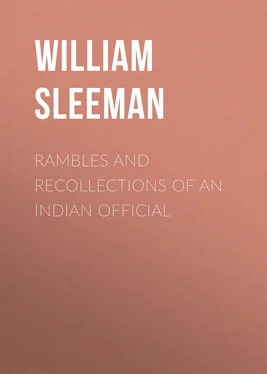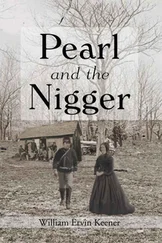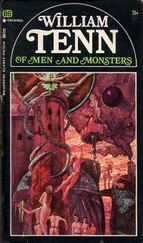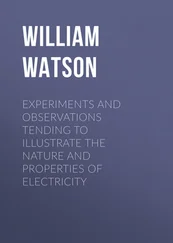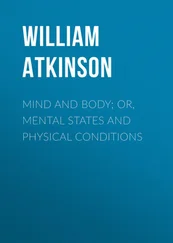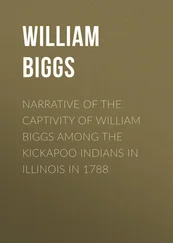William Sleeman - Rambles and Recollections of an Indian Official
Здесь есть возможность читать онлайн «William Sleeman - Rambles and Recollections of an Indian Official» — ознакомительный отрывок электронной книги совершенно бесплатно, а после прочтения отрывка купить полную версию. В некоторых случаях можно слушать аудио, скачать через торрент в формате fb2 и присутствует краткое содержание. Жанр: Путешествия и география, История, foreign_edu, foreign_antique, foreign_prose, на английском языке. Описание произведения, (предисловие) а так же отзывы посетителей доступны на портале библиотеки ЛибКат.
- Название:Rambles and Recollections of an Indian Official
- Автор:
- Жанр:
- Год:неизвестен
- ISBN:нет данных
- Рейтинг книги:4 / 5. Голосов: 1
-
Избранное:Добавить в избранное
- Отзывы:
-
Ваша оценка:
- 80
- 1
- 2
- 3
- 4
- 5
Rambles and Recollections of an Indian Official: краткое содержание, описание и аннотация
Предлагаем к чтению аннотацию, описание, краткое содержание или предисловие (зависит от того, что написал сам автор книги «Rambles and Recollections of an Indian Official»). Если вы не нашли необходимую информацию о книге — напишите в комментариях, мы постараемся отыскать её.
Rambles and Recollections of an Indian Official — читать онлайн ознакомительный отрывок
Ниже представлен текст книги, разбитый по страницам. Система сохранения места последней прочитанной страницы, позволяет с удобством читать онлайн бесплатно книгу «Rambles and Recollections of an Indian Official», без необходимости каждый раз заново искать на чём Вы остановились. Поставьте закладку, и сможете в любой момент перейти на страницу, на которой закончили чтение.
Интервал:
Закладка:
371
Concerning Chhatarsāl (A.D. 1671 to 1731), see notes ante , Chapter 14 note 9, and chapter 23 note 11. He was one of the sons of Champat Rāi. The correct date of the death of Chhatarsāl is Pūs Badi 3, Sanwat, 1788 = A.D. 1731. Hardī (Hirdai) Sā succeeded to the Rāj, or kingdom, of Pannā, and Jagatrāj to that of Jaitpur. These kingdoms quickly broke up, and the fragments are now in part native states and in part British territory. The Orchhā State was formed about the beginning of the sixteenth century, and the Chandērī and Datiyā States are offshoots from it, which separated during the seventeenth century.
372
As already observed (ante , Chapter 26, note 29), the Jālaun State became British territory in 1840, four years after the tour described in the text, and four years before the, publication of the book. The Jhānsī State similarly lapsed on the death of Rājā Gangādhar Rāo in November, 1853. The Rānī Lachhmī Bāī joined the mutineers, and was killed in battle in June, 1858.
373
We are told in 2 Samuel, chap. xxiv, that the Deity was displeased at a census of the people, taken by Joab by the order of David, and destroyed of the people of Israel seventy thousand, besides women and children. [W. H. S.] The editor, in the course of seven years' experience in the Settlement department, six of which were agent in Bundēlkhand, never heard of the doctrine as to the incestuous character of surveys. Probably it had died out. Even a census no longer gives rise to alarm in most parts of the country. The wild rumours and theories common in 1872 and 1881 did not prevail when the census of 1891 was taken, or during subsequent operations.
374
This theory is, of course, erroneous.
375
The flax plant (Linum usitatissimum ) is grown in India solely for the sake of the linseed. Linen is never made, and the stalk of the plant, as ordinarily grown, is too short for the manufacture of fibre. The attempts to introduce flax manufacture into India, though not ultimately successful, have proved that good flax can be made in the country, from Riga seed. Indian linseed is very largely exported. (Article 'Flax' in Balfour, Cyclopaedia , 3rd ed.)
376
Spores is the more accurate word.
377
That is to say, cattle-trespass. Cattle do not care to eat the green flax plant. The fields are not fenced.
378
The rust, or blight, described in the text probably was a species of Unedo . The gram, or chick-pea, and various kinds of pea and vetch are grown intermixed with the wheat. They ripen earlier, and are plucked up by the roots before the wheat is cut.
379
Chap. 4 of the Korān is entitled 'Women', and chap. 24 is entitled 'Light'. The story of Ayesha's misadventure is given in Sale's notes to chap. 24.
380
Muhammad died A.D. 632. Abū Bakr succeeded him, and after a khalīfate of only two years, was succeeded by Omar, who was assassinated in the twelfth year of his reign.
381
Basrah (Bassorah, Bussorah) in the province of Baghdad, on the Shatt-ul-Arab, or combined stream of the Tigris and Euphrates, was founded by the Khalīf Omar.
382
In the author's time the Muhammadan criminal law was applied to the whole population by Anglo-Indian judges, assisted by Muhammadan legal assessors, who gave rulings called fatwas on legal points. The Penal Code enacted in 1859 swept away the whole jungle of Regulations and fatwas , and established a scientific System of criminal jurisprudence, which bas remained substantially unchanged to this day. Adultery is punishable under the Code by the Court of Session, but prosecutions for this offence are very rare. Enticing away a married woman is also defined as an offence, and is punishable by a magistrate. Complaints under this head are extremely numerous, and mostly false. Secret and unpunished murders of women undoubtedly are common, and often reported as deaths from snake-bite or cholera. An aggrieved husband frequently tries to save his honour, and at the same time satisfy his vengeance, by tromping up a false charge of burglary against the suspected paramour, who generally replies by an equally false alibi .
383
A prosecution under the Penal Code for adultery can be instituted only by the husband, or the guardian representing him, and the woman is not punishable. Although the Muhammadan law of evidence has been got rid of, the Anglo-Indian courts are still unsuitable for the prosecution of adultery cases, especially where Indians are concerned. The English courts, though they do not require any specified number of witnesses, demand strict proof given in open court, and no Indian, whose honour has really been touched, cares to expose his domestic troubles to be wrangled over by lawyers. Many officers, including the editor, would be glad to see the section which renders adultery penal struck out of the Code. The matrimonial delinquencies of Indians are better dealt with by the caste organizations, and those of Europeans by civil action.
384
The Trigonometrical Survey, originated by Colonel Lambton, was begun at Cape Comōrin in 1800. It is now almost, if not quite, complete, except in Burma. See Markham, A Memoir of the Indian Surveys (2nd ed., 1878). The stations are marked by masonry pillars, for the partial repair of which a small sum is annually allotted.
385
Hindoos believe that holy men, by means of great austerities, can attain power to compel the gods to do their bidding.
386
For some account of the modern agitation against cow-killing. See note ante , Chapter 26, note 6.
387
On the sacredness of the Nerbudda see note ante , Chapter 1, note 13.
388
The Holī festival marks approximately the time of the vernal equinox, ten days before the full moon of the Hindoo month Phālgun. The day of the bonfire does not always fall on the 16th of March. It is not considered lucky to begin harvest till the Holī has been burnt. Mr. Crooke holds that 'on the whole, there seems to be some reason to believe that the intention to promote the fertility of men, animals, and crops, supplies the basis of the rites' ('The Holī, a Vernal Festival of the Hindus', Folklore , vol. xxv (1914), p. 83). I agree.
389
The pīpal-tree (Ficus religiosa , Linn.; Urostigma religiosum , Gasp.) is sacred to Vishnu, and universally venerated throughout India.
390
About four hundred thousand persons.
391
Two pice x 400,000 = 800,000 pice, = 200,000 annas, = 12,500 rupees. Even if the author's estimate of the numbers be much too large, the pecuniary result must have been handsome, not to mention the butter and flour.
392
Hindoo sacred books.
393
The lake known as Barwā Sāgar was formed by a Bundēla chief, who constructed an embankment nearly three- quarters of a mile long to retain the waters of the Barwā stream, a tributary of the Betwā. The work was begun in 1705 and completed in 1737. The town is situated at the north-west corner of the lake, on the road from Jhānsī to the cantonment of Nowgong (properly Naugāon, or Nayāgāon), at a distance of twelve miles from Jhānsī (N.W.P. Gazetteer , 1st ed., vol. i, pp. 243 and 387).
Читать дальшеИнтервал:
Закладка:
Похожие книги на «Rambles and Recollections of an Indian Official»
Представляем Вашему вниманию похожие книги на «Rambles and Recollections of an Indian Official» списком для выбора. Мы отобрали схожую по названию и смыслу литературу в надежде предоставить читателям больше вариантов отыскать новые, интересные, ещё непрочитанные произведения.
Обсуждение, отзывы о книге «Rambles and Recollections of an Indian Official» и просто собственные мнения читателей. Оставьте ваши комментарии, напишите, что Вы думаете о произведении, его смысле или главных героях. Укажите что конкретно понравилось, а что нет, и почему Вы так считаете.
